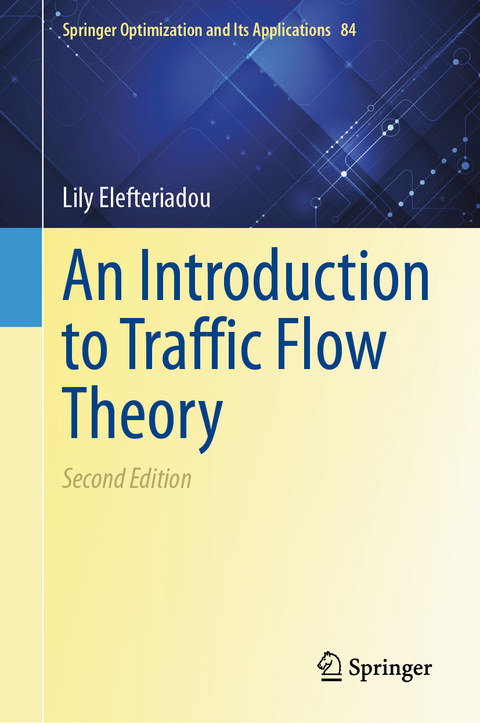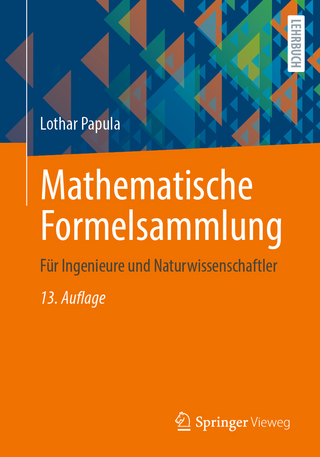
An Introduction to Traffic Flow Theory
Springer International Publishing (Verlag)
978-3-031-54029-5 (ISBN)
This second edition of An Introduction to Traffic Flow Theory adds new material in several chapters related to advanced technologies including autonomy, the use of sensors and communications, and particularly congestion mitigation solutions that leverage connected and autonomous vehicles (CAVs). It also includes a new chapter that briefly outlines several mathematical analysis techniques commonly used in traffic flow theory, aiming to introduce students to some of the most frequently used tools available for traffic operational-related analysis. This new edition also includes several updates related to the most recent versions of the Highway Capacity Manual and the Green Book. This textbook is meant for use in advanced undergraduate/graduate level courses in traffic flow theory with prerequisites including two semesters of calculus, statistics, and an introductory course in transportation. The text would also be of interest to transportation professionals as a refresherin traffic flow theory or as a reference. Students and engineers of diverse backgrounds will find this text accessible and applicable to today's traffic issues.
This text provides a comprehensive and concise treatment of the topic of traffic flow theory and includes several topics relevant to today's highway transportation system. It provides the fundamental principles of traffic flow theory as well as applications of those principles for evaluating specific types of facilities (freeways, intersections, etc.). Newer concepts of Intelligent transportation systems (ITS) and their potential impact on traffic flow are discussed. State-of-the-art traffic flow research, microscopic traffic analysis, and traffic simulation have significantly advanced and are also discussed in this text. Real-world examples and useful problem sets complement each chapter.
Lily Elefteriadou is the Director of the UF Transportation Institute (UFTI) and the Barbara Goldsby Professor of Civil Engineering in the Department of Civil & Coastal Engineering, Engineering School of Sustainable Infrastructure & Environment at UF. Her research focus is traffic operations, traffic flow theory and simulation. She is the principal investigator of the US DOT-funded Regional University Transportation Center for Region 4 (Southeast Transportation Research Innovation Development and Education, or STRIDE). Dr. Elefteriadou received her Ph.D. in 1994 from NYU Polytechnic University, New York for Transportation Planning and Engineering. She received M.S. degree in Civil Engineering from Auburn University, Auburn, Alabama, in 1990. Her B.S. in Surveying, and Environmental Engineering, (five-year program) is from Aristotle University of Thessaloniki, Greece, was earned in 1987. Her research interested include traffic flow theory, traffic simulation, and signal control optimization. Awards & Distinctions. Dr. Elefteriadou has received the following awards and distinctions: ASCE Harland Bartholomew Award (2019), University of Florida Term Professorship Award (2018), ASCE James Laurie Prize (2015), ARTBA Ethel S. Birchland Lifetime Achievement Award (2015), Best Model Development Paper Award, for the paper' "Driver Behavior Based Lane-Changing Model and Its Implementation in CORSIM," Joint (2010), Subcommittee on Traffic Simulation, Transportation Research Board (2010), and Fulbright Scholar "Technical University Delft, Netherlands" (2001).
Introduction.- Part 1.- 1. Modeling the Motion of a Single Vehicle.- 2. Modeling Vehicle Interactions and the Movement of Groups of Vehicles.- Part 2.- 3. The Traffic Stream: Traffic Flow Performance Characteristics.- 4. Capacity.- 5. Traffic Operational Performance Measures.- Part 3.- 6. Analytical Models for Bottleneck and Queuing Evaluations.- 7. Simulation Modeling.- Part 4.- 8. Freeways.- 9. Signalized Intersections and Networks.- 10. Unsignalized Intersections.- 11. Two-Lane Highways.- Appendix A.- Appendix B.- Index.
| Erscheinungsdatum | 23.04.2024 |
|---|---|
| Reihe/Serie | Springer Optimization and Its Applications |
| Zusatzinfo | XVI, 337 p. 137 illus., 113 illus. in color. |
| Verlagsort | Cham |
| Sprache | englisch |
| Maße | 155 x 235 mm |
| Themenwelt | Mathematik / Informatik ► Mathematik ► Angewandte Mathematik |
| Technik ► Bauwesen | |
| Schlagworte | optimization traffic flow • textbook traffic flow • Traffic Engineering • Traffic Flow Theory • traffic management • traffic operations |
| ISBN-10 | 3-031-54029-8 / 3031540298 |
| ISBN-13 | 978-3-031-54029-5 / 9783031540295 |
| Zustand | Neuware |
| Informationen gemäß Produktsicherheitsverordnung (GPSR) | |
| Haben Sie eine Frage zum Produkt? |
aus dem Bereich


